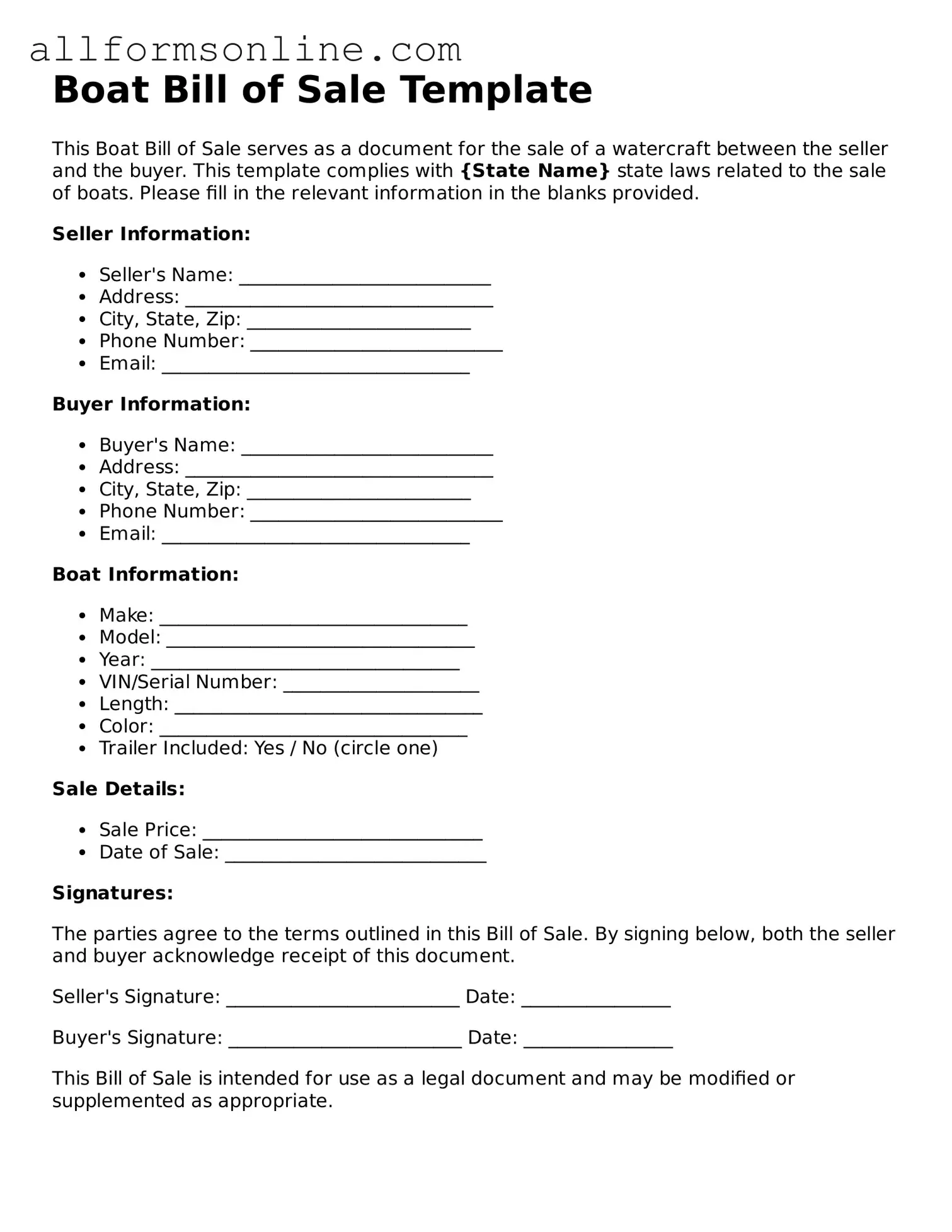What is a Boat Bill of Sale?
A Boat Bill of Sale is a legal document that transfers ownership of a boat from one party to another. It serves as proof of the transaction and outlines the terms of the sale, including details about the boat and the parties involved.
Why do I need a Boat Bill of Sale?
This document is essential for establishing legal ownership. It protects both the buyer and seller by providing a record of the transaction. Additionally, many states require a Bill of Sale for boat registration and titling purposes.
What information should be included in a Boat Bill of Sale?
The form should include the names and addresses of both the buyer and seller, a description of the boat (make, model, year, hull identification number), the sale price, and the date of the transaction. It may also include any warranties or conditions of the sale.
Is a Boat Bill of Sale required in every state?
While many states require a Bill of Sale for boat registration, the requirements can vary. It’s important to check the regulations in your state to determine if a Bill of Sale is necessary for your transaction.
Do I need a notary for a Boat Bill of Sale?
A notary is not always required, but having the document notarized can add an extra layer of authenticity. Some states may require notarization, especially if the boat is being registered or titled.
Can I use a generic Bill of Sale template for my boat?
Yes, you can use a generic template, but it’s advisable to ensure it meets your state’s specific requirements. Tailoring the document to include all necessary details about the boat and the transaction is crucial for legal protection.
What happens if I lose my Boat Bill of Sale?
If you lose the Bill of Sale, it may complicate future ownership verification or registration. You can create a duplicate by having both parties sign a new document that states the previous sale details. Keeping a copy in a secure place is always recommended.
Can a Boat Bill of Sale be canceled?
A Boat Bill of Sale is a binding agreement once signed. However, if both parties agree, they can create a cancellation agreement. It’s best to document this process to avoid any misunderstandings in the future.
What if the boat has a loan or lien on it?
If there is a loan or lien on the boat, it’s essential to address this before completing the sale. The seller should pay off the loan or work with the lender to transfer the title to the buyer. Ensure that the Bill of Sale reflects any outstanding financial obligations.
How can I ensure the Boat Bill of Sale is valid?
To ensure validity, include all required information, have both parties sign the document, and consider notarization. Keeping a copy for your records is also important. This will help in case any disputes arise in the future.
